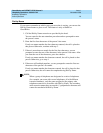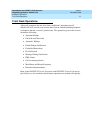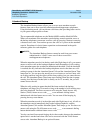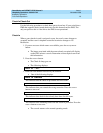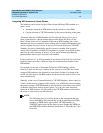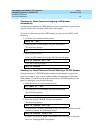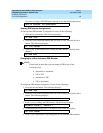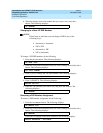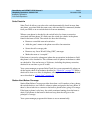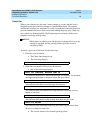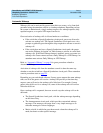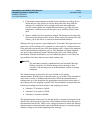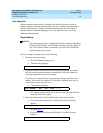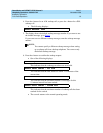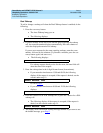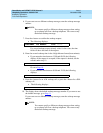
GuestWorks and DEFINITY ECS Release 9
Hospitality Operations
555-231-742
Issue 1
November 2000
Hospitality Operations
28Front Desk Operations
Suite Check-In
Suite Check-In allows you to have the switch automatically check-in more than
one phone, associated with the same room, with one check-in command (whether
from your PMS or an on-switch check-in from an attendant).
When a room phone is checked in, the switch looks for a hunt-to extension
associated with that phone. If it finds one, the switch also checks in the phone
found in the hunt-to field. The switch also does the following:
■ Removes controlled outward restriction
■ Adds the guest’s name to the phone record for that extension
■ Stores the call coverage path
■ Removes any Leave Word Calling (LWC) messages
■ Marks the room as “occupied.”
If the hunt-to (second or subsequent) phone has an extension in the hunt-to field,
that phone is also checked in. This continues until all phones in the hunt-to chain
are checked in. You can have up to 30 phones, including the primary extension,
checked-in at one time as part of a suite.
Your system manager programs Suite Check-In to occur automatically when you
do the regular check-in procedures described in ‘‘Check-In’’ on page 23
. When a
check-out is done on a suite of telephones, all telephones in the suite are checked
out as described in ‘‘Check-Out’’ on page 29
.
Station Hunt Before Coverage
Station Hunt Before Coverage provides that when a call is made to a busy phone,
the switch checks to see if there is a hunt-to phone assigned to the busy phone. If
there is, the switch tries to connect to the hunt-to phone before going to coverage.
If the hunt-to phone is also busy, the switch continues hunting down the hunt-to
chain. If all phones in the hunt-to chain are busy, then the call goes to the
principal’s coverage.
Your system manager programs this feature to occur automatically.



